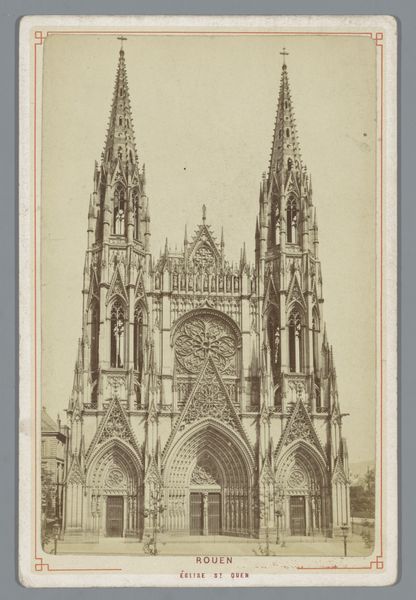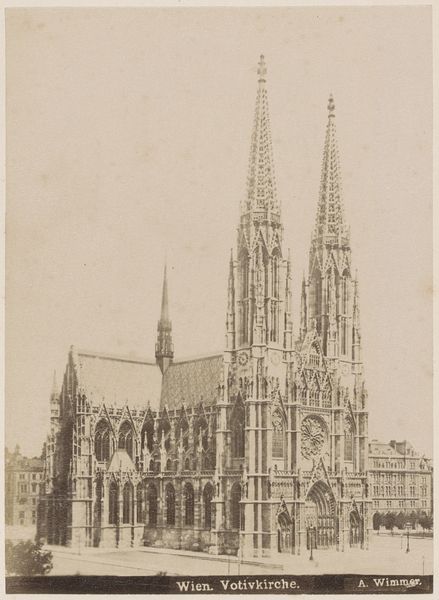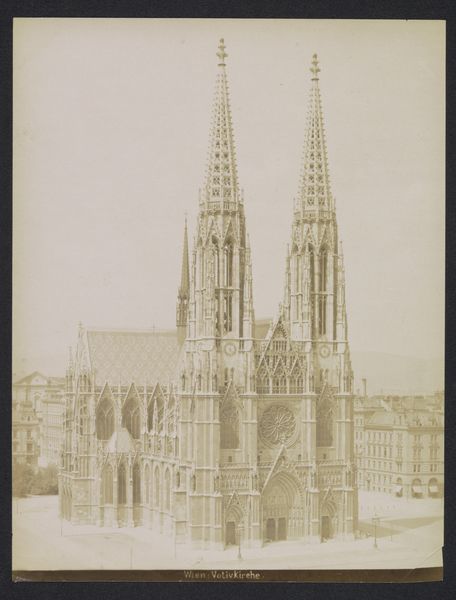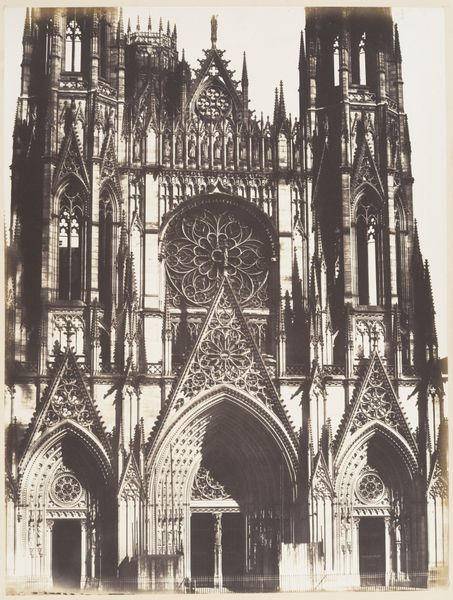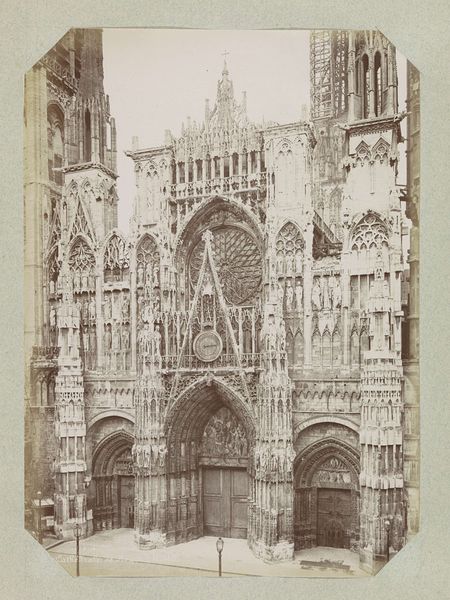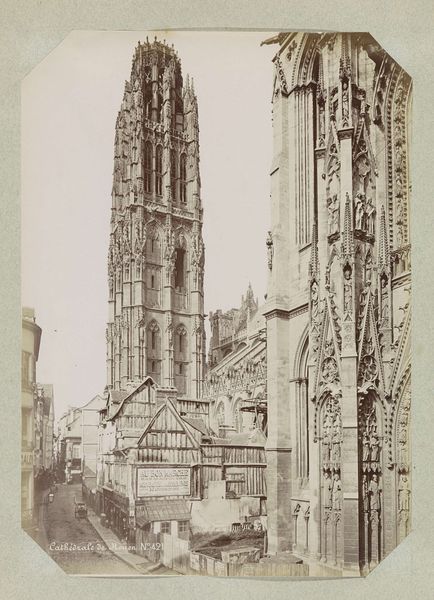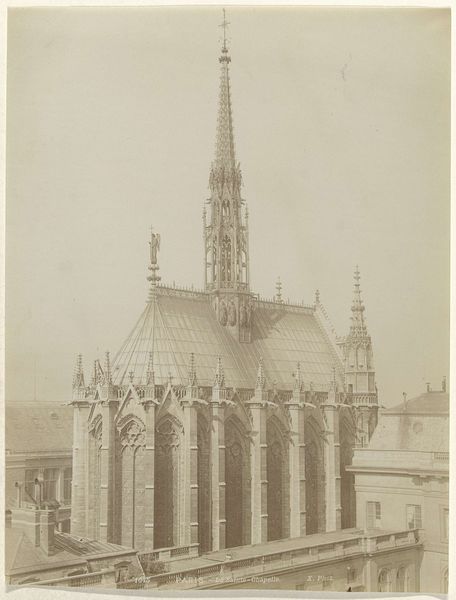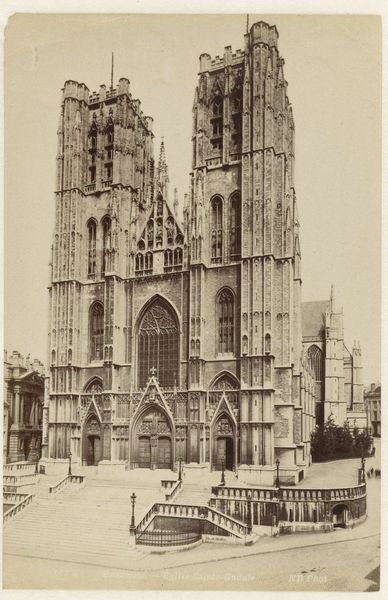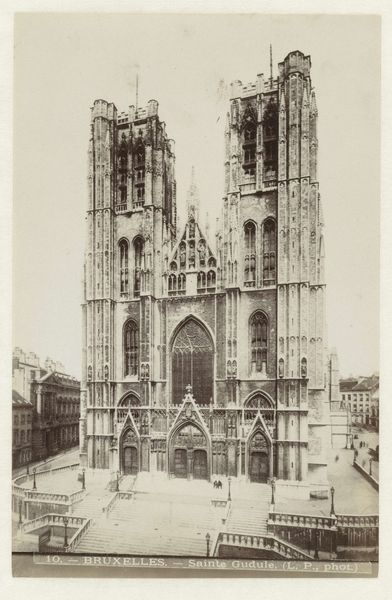
Voorzijde van de abdijkerk van Saint-Ouen in Rouen c. 1880 - 1900
0:00
0:00
Dimensions: height 358 mm, width 259 mm
Copyright: Rijks Museum: Open Domain
Editor: Here we have Médéric Mieusement’s photographic print, "Voorzijde van de abdijkerk van Saint-Ouen in Rouen," created sometime between 1880 and 1900. The sheer verticality and the almost overwhelming detail give it a kind of imposing grandeur. What symbols do you see present in this architectural portrait? Curator: Indeed. Gothic architecture is fertile ground for symbology. The pointed arches themselves gesture heavenward, don't they? In this photograph, Mieusement captured more than just stone and mortar; he froze a cultural memory. Editor: Cultural memory? How so? Curator: Look closely at the rose window, echoed in the arches below. The circle has represented wholeness, divinity across many cultures. In a Gothic cathedral, that placement invites worshippers to connect with the divine, filtering light and, symbolically, divine knowledge into the physical space. Then there's the repetition of forms - each echo reinforces the intended message, driving it deeper into the subconscious. Editor: So it’s like a visual echo chamber? Curator: Precisely. It creates an atmosphere meant to instill specific emotions, like reverence and awe. Also, do you see how small the figures near the entrance look? Mieusement likely framed the shot this way to emphasize the Church’s immense power. Editor: That makes perfect sense. I was so caught up in the intricate details, I missed the broader narrative. Curator: Sometimes the grandest symbols hide in plain sight. But photography adds an interesting layer, right? Mieusement is presenting his subjective take on this structure which had an established meaning that predated his work by centuries. Editor: Definitely something to ponder, the meeting of history and artistic expression.
Comments
No comments
Be the first to comment and join the conversation on the ultimate creative platform.

